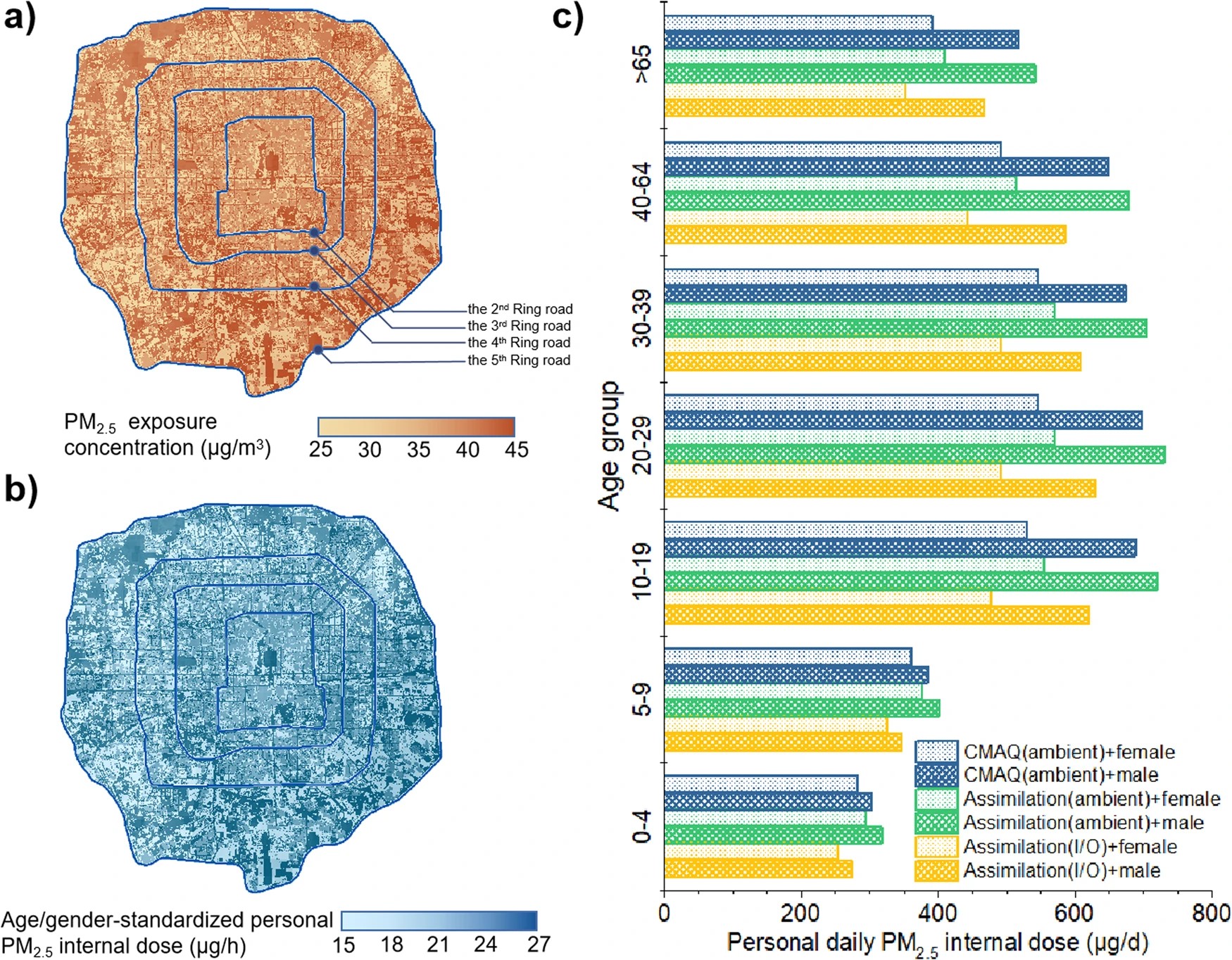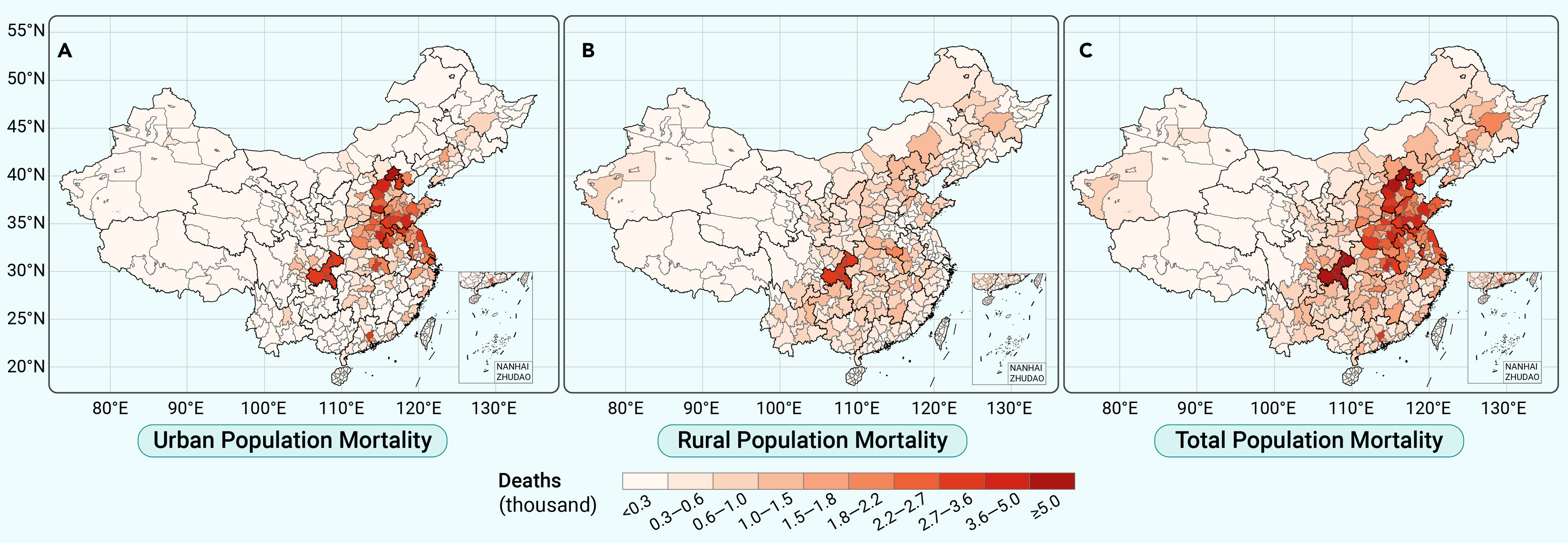Recently, a collaborative effort between School of Environment, Tsinghua University, led by Academician He Kebin and Professor Liu Huan, and scholars from top international universities in the United Kingdom, has utilized machine learning algorithms to propel the development of air pollution distribution datasets towards long-term coverage and high spatial resolution. The team conducted a refined assessment of exposure heterogeneity and disease burden from the respect of individual activities and population transitions. The series of achievements resulting from this research has been published in journals under Nature Portfolio and Cell Press, namely Communications Earth & Environment and The Innovation.
The first accomplishment focuses on PM2.5, with a emphasis on refined exposure assessment for city-scale population. Using a machine learning algorithm with multi-source data, a citywide, fine-grained (30-meter resolution) PM2.5 concentration field was established for Beijing. The study delved into the exposure levels of individuals in both indoor and outdoor micro-environments. It addresses the limitations of existing medium-scale models in describing exposure heterogeneity among populations and refined the exposure assessment methods, transitioning from traditional concentration exposure to the internal dose, underscoring significant exposure differences among age and gender subgroups. Titled "Ultra-high-resolution mapping of ambient fine particulate matter to estimate human exposure in Beijing", the research was published online in the journal Communications Earth & Environment. This achievement is part of the international collaborative project "Pathways to equitable healthy cities", a global partnership aimed at improving population health, enhancing health equity, and ensuring environmental sustainability in cities worldwide. Professor Liu Huan and Academician He Kebin from Tsinghua University are the co-corresponding authors of the paper, with doctoral student Wang Yongyue and master's student Li Qawei as co-first authors. Associate Professor Long Ying, Professor Yang Xudong, and Professor Mao Qizhi from the School of Architecture at Tsinghua University provided crucial data support for micro-environment identification and exposure. Professor Liu Jing and Dr. Deng Qiujun from Beijing Anzhen Hospital offered careful guidance on health risk assessment. Professor Majid Ezzati from Imperial College London and Professor Gill Baumgartner from McGill University in Canada were actively involved in the project. Professor Zhao Bin from the School of Architecture at Tsinghua University provided guidance and participated in discussions.

Figure 1 PM2.5 exposure pattern of the population within the Fifth Ring Road area in Beijing
a) Indoor and outdoor PM2.5 exposure concentration distribution. b) age- and gender-standardized personal hourly PM2.5 internal dose distribution. c) daily average PM2.5 internal dose in age and gender sub-groups
The second achievement focuses on ozone, primarily addresses exposure assessment in the process of national-scale urbanization. Utilizing a deep learning algorithm and integrating multiple extensively developed datasets on ozone concentrations, the study finely delineates the spatial distribution and temporal trends of ambient ozone concentrations, distinguishing between urban and rural areas from 1990 to 2019. By integrating the latest epidemiological evidence based on cohort studies, the research offers a profound analysis of the relationship between population ozone exposure and the excess burden of cardiopulmonary mortality over the past three decades amid the wave of urbanization in China. The study provides a new perspective on population migration in this context. Titled "Antagonism between ambient ozone increase and urbanization-oriented population migration on Chinese cardiopulmonary mortality," the research was published online in the journal "The Innovation." Professor Liu Huan from Tsinghua University, Professor Guo Yuming from Monash University in Australia, and Professor Alexander Thomas Archibald from the Department of Chemistry at the University of Cambridge are the co-corresponding authors of the paper. Dr. Sun Haitong from the University of Cambridge and doctoral student Zhao Junchao from the School of Environment at Tsinghua University are the co-first authors. This research is supported by Professor Liu Huan's Newton Advanced Fellowship project, and it was jointly completed during the visit of doctoral student Zhao Junchao to the University of Cambridge.

Figure 2 Distribution of excess deaths from ozone-related cardiopulmonary diseases (cardiovascular diseases and chronic obstructive pulmonary disease) in 2019
A. Urban population mortality. B. Rural population mortality. C. Total population mortality.
Journal Introduction:
Communications Earth & Environment is an open-access journal launched by the Nature Publishing Group in 2020. It is dedicated to publishing high-quality research, reviews, and commentaries in the fields of Earth science, environmental science, and planetary science. The impact factor for the past two years is 7.90 (2022).
The Innovation is a comprehensive academic journal co-founded by young scientists from the Chinese Academy of Sciences and Cell Press in 2020. It covers all fields of natural sciences, and the impact factor for the past two years is 32.1 (2022).
Citation:
1. Wang, Y., Li, Q., Luo, Z. et al. Ultra-high-resolution mapping of ambient fine particulate matter to estimate human exposure in Beijing. Commun Earth Environ 4, 451 (2023). https://doi.org/10.1038/s43247-023-01119-3 (Link: https://www.nature.com/articles/s43247-023-01119-3)
2. Sun H., Zhao J., Liu X., et al. Antagonism between ambient ozone increase and urbanization-oriented population migration on Chinese cardiopulmonary mortality. The Innovation. 4(6),100517 (2023). https://doi.org/10.1016/j.xinn.2023.100517 (Link: https://www.cell.com/the-innovation/fulltext/S2666-6758(23)00145-5)